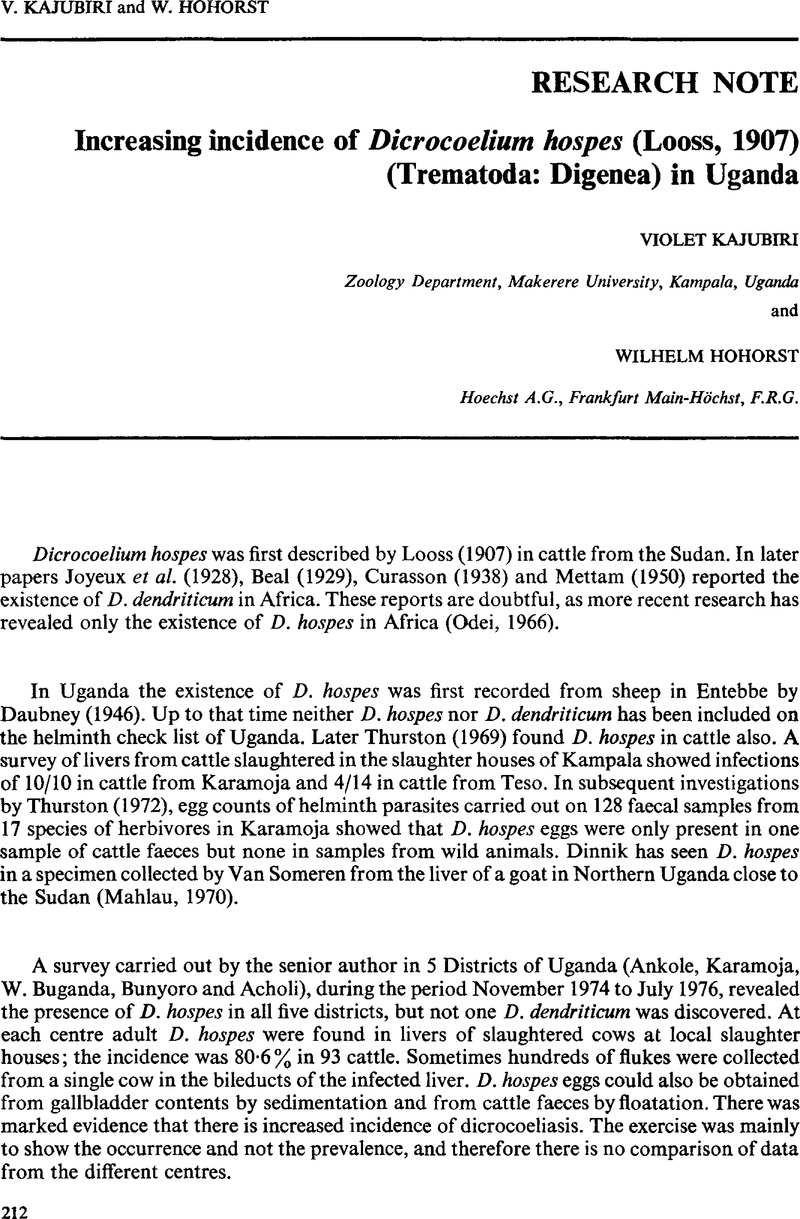Crossref Citations
This article has been cited by the following publications. This list is generated based on data provided by Crossref.
Malek, Emile A.
1980.
Occurrence of Dicrocoelium hospes in Mali and Senegal, West Africa.
Journal of Helminthology,
Vol. 54,
Issue. 1,
p.
45.
Kumar, Vinai
1999.
Trematode Infections and Diseases of Man and Animals.
p.
215.
Awharitoma, A.O.
Okaka, C.E.
and
Obaze, S.E.
2003.
Larval stages of Brachylaima fuscatum in the terrestrial snail Limicolaria aurora from southern Nigeria.
Journal of Helminthology,
Vol. 77,
Issue. 1,
p.
1.
Manga-González, M. Yolanda
and
Ferreras, M. Carmen
2014.
Digenetic Trematodes.
Vol. 766,
Issue. ,
p.
393.
Manga-González, M. Yolanda
and
Ferreras, M. Carmen
2019.
Digenetic Trematodes.
Vol. 1154,
Issue. ,
p.
279.
Addy, Francis
Narh, Julius Kwesi
Adjei, Keziah Kwarteng
and
Adu-Bonsu, Gideon
2021.
Dicrocoelium spp. in cattle from Wa, Ghana: prevalence and phylogeny based on 28S rRNA.
Parasitology Research,
Vol. 120,
Issue. 4,
p.
1499.
Manga-González, M. Yolanda
Ferreras, M. Carmen
and
Kafle, Pratap
2024.
Digenetic Trematodes.
Vol. 1454,
Issue. ,
p.
349.



